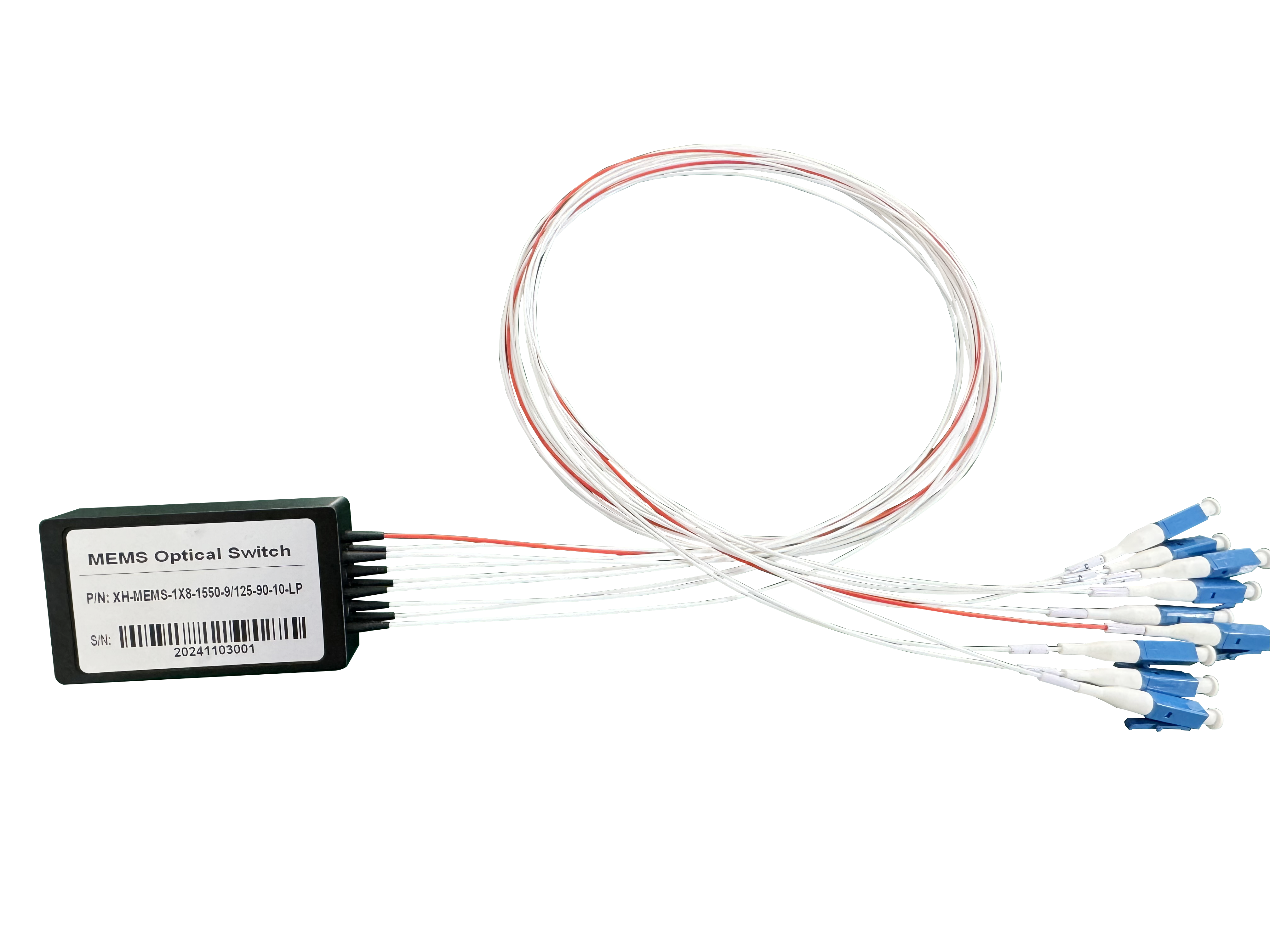In the wave of optical communication technology, optical switches are key components in optical networks, and their performance and stability directly affect the efficiency and quality of the entire communication system. MEMS (Micro-Electro-Mechanical System) optical switches and mechanical optical switches are two mainstream technologies, each with unique advantages and characteristics.
1. Technical principles and structural differences

MEMS optical switch is an optical switch based on micro-electromechanical system technology. It uses the precise combination of micro-mechanical structures (such as micro-mirror arrays) and electronic control circuits to achieve precise control of the optical signal path. When the optical signal enters the input port, the light beam is adjusted to parallel light through a collimating lens and then irradiated onto the micro-mirror array. Each micro-mirror can be precisely controlled by electrostatic force or magnetoelectric force. Through the control of external electronic signals, the micro-mirror can rotate or translate slightly, thereby changing the direction of the reflected light and guiding the optical signal to the predetermined output port.
Mechanical optical switch is a device that physically changes the optical path to connect or disconnect the optical signal. It usually relies on relays or motors to drive the optical path switching. Its working principle is simple but its reliability is high. When two optical ports need to be connected, the mechanical device will accurately move the optical element to guide the optical signal from one port to another. This switch is centered on mechanical movement, has a relatively long action time, and has problems with bounce jitter and poor repeatability.

2. Performance and feature comparison
>Loss and stability
MEMS optical switches usually have lower insertion loss and higher stability due to their compact structure and high integration. In contrast, the loss of mechanical optical switches is relatively large, and their long-term stability may be affected due to the presence of mechanical movement.
> Switching speed and response time
The switching speed of MEMS optical switches is usually faster, reaching milliseconds or even microseconds, which is particularly important for optical communication systems that require high-speed switching. The switching time of mechanical optical switches is relatively long, generally in the order of milliseconds.
> Life and reliability
MEMS optical switches are made of semiconductor materials and microelectronics technology, and can almost be considered to have an infinite life. The service life of mechanical optical switches is generally within 30 million times, which is a consumable part and can be used for about 3-5 years.
>Cost and price
At present, the cost of MEMS optical switches is relatively high, but with the advancement of technology and the increase in output, its price is gradually decreasing. Mechanical optical switches have price advantages due to their simple structure and low manufacturing cost.
3. Application fields and development trends
MEMS optical switches have outstanding performance in fast switching and high integration, and are particularly suitable for optical communication systems that require high stability and high-speed response. Mechanical optical switches still have a certain application space in basic demand scenarios due to their price advantages and simple reliability. In the future, as the requirements for speed, capacity and flexibility of optical communication networks continue to increase, MEMS optical switches will gradually become the mainstream technology.
EMS optical switches and mechanical optical switches have their own advantages and disadvantages and are suitable for different application scenarios. With the continuous advancement of technology and the continuous development of the market, MEMS optical switches will gradually become the mainstream technology in the field of optical communications.
Optical switches produced by Xionghua Photoelectric: Mechanical optical switches, MEMS optical switches, and Magneto-optical switches.

Comments are closed